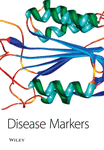PBC Triggers in Water Reservoirs, Coal Mining Areas and Waste Disposal Sites: From Newcastle to New York
Abstract
Various environmental factors have been proposed as triggers of primary biliary cirrhosis (PBC), a progressive autoimmune cholestatic liver disease which is characterised by the destruction of the small intrahepatic bile ducts. Support for their pathogenic role in PBC is provided by epidemiological studies reporting familial clustering and clusters of the disease within a given geographical area. The seminal study by Triger reporting that the great majority of PBC cases in the English city of Sheffield drank water from a specific water reservoir, has been followed by studies reporting disease ′hot spots′ within a restricted geographic region of the former coal mining area of Newcastle. The New York study reporting an increased risk and significant clustering of PBC cases near toxic federal waste disposal sites has added strength to the notion that environmental factors, possibly in the form of infectious agents or toxic/chemical environmental factors in areas of contaminated land, water or polluted air may play a key role in the development of the disease. This review discusses the findings of reports investigating environmental factors which may contribute to the cause of primary biliary cirrhosis.




